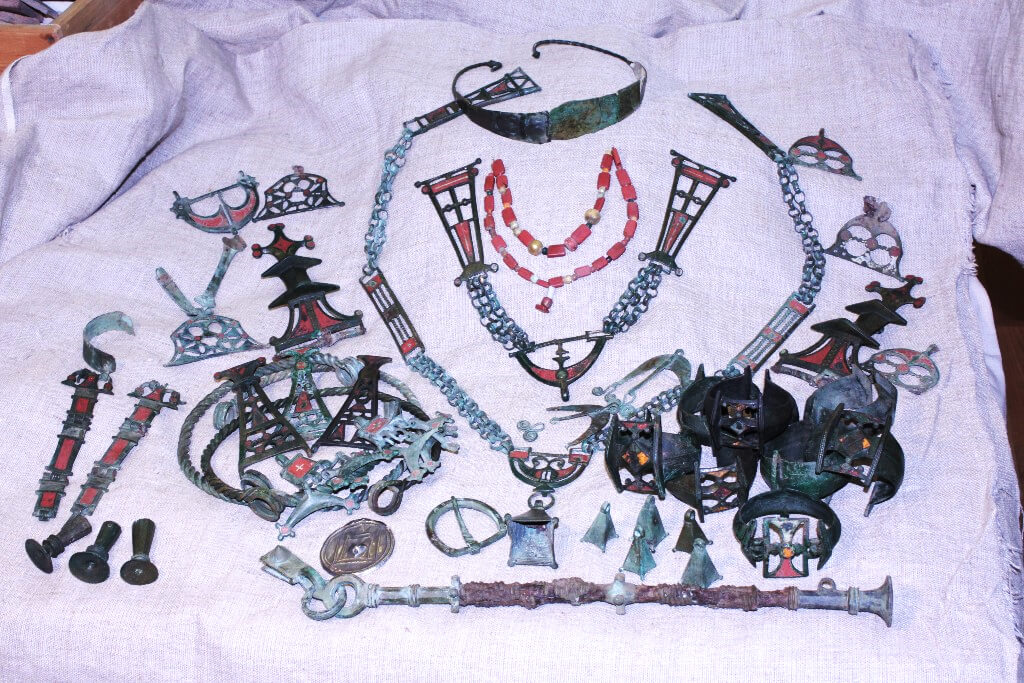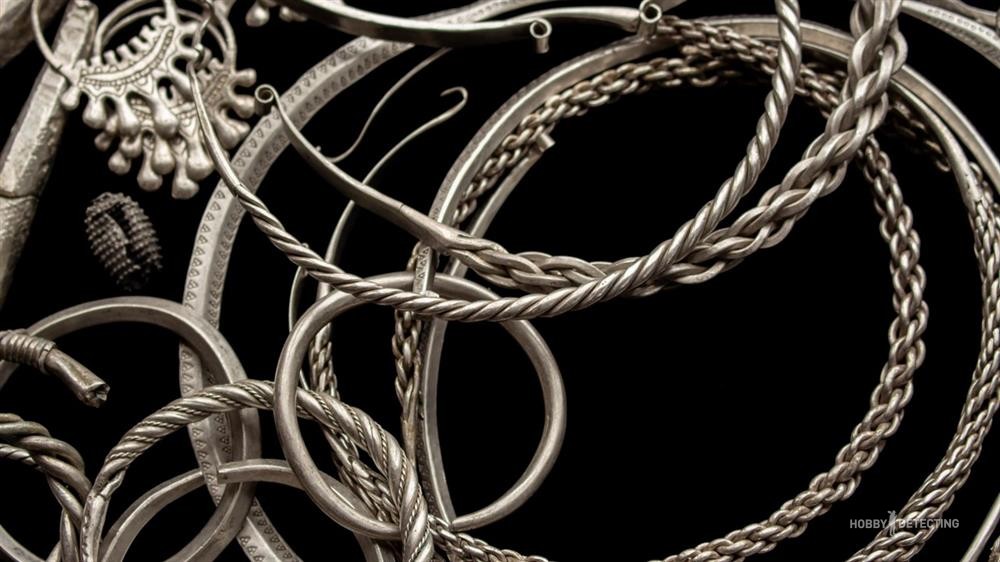A treasure that could change a lot, but no one needs change
Does anyone know how many treasures have been officially and voluntarily registered in the Russian Federation over the past thirty years? It’s voluntary, and it’s registered. And, not, as in the case of the same Bryansk treasure, in relation to which, in every media article or scientific work the same phrase is repeated. Quote: “we managed to establish the identity of the black digger and persuade him to voluntarily hand over to the state”

Bryansk treasure
Note. The Bryansk treasure is, according to experts, the most complete complex of champlevé enamels jewelry discovered in 2010 on the right bank of the Sev River , dates back to the 3rd century AD. The treasure was found by chance during search work at WWII battlefields.
So, here you go. This year, a certain summer resident approached the archaeologists of the Staraya Ryazan Archaeological Expedition (Old Ryazan Settlement) with an offer to donate a treasure of money and clothing. The treasure included Novgorod-type hryvnias and women’s jewelry. The treasure was accepted, research was carried out at the discovery site, the cultural layer was not found, and the treasure itself, after ceremonial presentations at the Institute of Archives of the Russian Academy of Sciences, is intended to be transferred to the museum. Complete happy ending.

Isad treasure Photo: Maxim Pankin
Only, few people paid attention to the fact that the citizen who voluntarily handed over the treasure wished to remain anonymous. Why? Yes, because according to the current legislation, even if the treasure is voluntarily handed over to archaeologists, he faces a criminal charge. The fact is that in our country, we still do not have a system for the legal transfer of accidentally found archaeological objects.
Why is this necessary?For example, let’s take a country like Estonia. There, for almost ten years, there has been a law according to which a citizen, upon discovery of a treasure or other archaeological objects, can receive a monetary reward that exceeds the value of the objects he found. Thus, in Estonia there are many examples when citizens, by chance or within the framework of a permit (license) for instrumental search, found treasures or valuable archaeological objects and received significant monetary rewards of up to 100 thousand euros for this.
If a citizen did not make efforts to independently extract the treasure, but immediately called archaeologists, then the reward for the valuables is calculated according to a special coefficient scale. In this case, the premium amount may be higher than the nominal market value of the item or set of items.
Approximately the same system works in Denmark. There, if a treasure or valuable archaeological objects are discovered, the citizen is obliged to photograph in detail the location of the objects on the spot and then hand over everything to the nearest museum. In this case, a Danish citizen can count on a premium equal to 100% of the value of the find.
Note. According to established regulations, in Estonia archaeologists are required to arrive at the site of discovery of a treasure within 6 hours of receiving a call from a citizen.
And what do we have?And here, even according to the norms of USSR legislation, all archaeological objects are by default the property of the state, regardless of the circumstances of their discovery. At the same time, there can be no talk of any compensation or monetary reward. The main argument6 “If we start paying, then they will excavate everything that has not yet been excavated.” To a reasonable question, “Is it possible, like in Estonia, for archaeologists to arrive 6 hours in advance for a call, and pay only if a find has been made outside the boundaries of the identified archaeological site?” comes the answer “Russia is bigger than Estonia, we won’t be able to do it in 6 hours” “Okay, let’s do it like in Denmark, I took detailed pictures of the discovery site and handed over the items to the museum?? ?” But there are no answers.
We treat treasure hunters like terrorists. We do not negotiate, we do not pay ransoms.
What could be done with the treasure that was discussed at the very beginning of the article. It would be logical to calculate the cost according to the Gokhran tables, find the money and pay the conscientious citizen 100% of the value of the treasure. And, do this as effectively as possible, with the involvement of the media, bloggers and social activists. So that this story would be known in the most distant plague beyond the Arctic Circle.

Isad treasure Photo: Maxim Pankin
And, I am sure that over the next year there will be not dozens, but hundreds of citizens willing to voluntarily hand over previously found treasures. Over the past fifteen years, when the sale of archaeological objects has become almost impossible, citizens who have found something valuable are hiding it until better times. Some go to the closet, some to the attic, and some to the garage on a shelf among keys and bald tires.

Isad treasure Photo: Maxim Pankin
But, unfortunately, no one needs this. Archaeologists make their living by examining land plots, but for museum workers, every treasure is a headache. The main expositions of museum halls have long been established and they need to be changed for new exhibits — big problem.
This is how we live. Meanwhile, 52 treasures were registered in Estonia in 2020.
Note. Reading the book «Russian treasures of the 9th-13th centuries» (G.F. Korzukhina) I was surprised to learn that one of the most effective ways to find treasures for Russian archaeologists in the 19th century was going to fairs. There, among other guests, one could often see wives and young girls dressed in medieval jewelry. A rich peasant is walking through the fair, with his wife and three daughters. All in princely decorations of the 11th-12th centuries. To the question of archaeologists “Where does such beauty come from?” the invariable answer was “From my grandmother, left as an inheritance”
